Under the direction of Ontario’s Ministry of Education, Lambton Kent District School Board (LKDSB) and St. Clair Catholic District School Board (SCCDSB) will be implementing changes regarding reduced access to personal mobile devices and social networks identified in the Policy/ Program Memorandum 128 (PPM 128): The Provincial Code of Conduct and School Board Codes of Conduct for the 2024/2025 school year.
LKDSB and SCCDSB, in conjunction with all publicly funded school boards across the province, will be implementing these requirements on September 1, 2024, in an attempt to limit classroom distractions and create a culture of uninterrupted learning.
PPM 128, which the Ontario Ministry of Education released on April 28, 2024, speaks specifically to School Board Policy on Enforcement of Restrictions to Student Personal Mobile Use.
The memorandum states the following: Personal mobile devices are not to be used during instructional time except under the following circumstances:
- for educational purposes as directed by an educator
- for health or medical purposes
- to support special education needs
Cell phones, cameras and other digital imaging and/or audio recording devices are NOT permitted to be used in change rooms or washrooms at any time.
Students in Grades 8 and below may not use cellphones or other mobile devices at school during the school day without the permission of an educator and/or in the instances cited above.
Students in Grades 9 and above may not use cellphones or other mobiles devices during class time without the explicit permission of an educator and/or in the instances cited above.
“We know that student learning improves when students are not distracted from their lessons” states LKDSB Director John Howitt. “Breakfast and snack programs help to remove the distraction of hunger, just as limiting the access to cell phones and mobile devices help to remove the distractions they cause.”
In all instances, students’ personal mobile devices must be turned off or set to silent mode and stored out of view. If an educator sees a mobile device that is not stored out of view, they must discuss with the student and/or ask for it to be handed in for the class (Grades 9-12) or for the day (Grades K-8). The student must place the device in a storage area in a location designated by the educator or principal.
“Using a cell phone during instructional time or other restricted periods in school is a teachable moment” states SCCDSB Director of Education, Scott Johnson. “By addressing these moments, we show students that their engagement matters. It’s about developing an understanding and demonstrating that their educators genuinely care about their presence and participation in the classroom.”
Implementation strategies may vary depending on school and classroom communities and can include:
- Designating a space for cell phones and other personal mobile devices in classrooms and/or offices so that they are set to silent or powered off and out of view.
- Using lockers, classroom space such as a hanging numbered rack, lock box or safe, or any combination of these strategies.
As the safety and wellbeing of our students remains paramount, Parents/Guardians continue to be invited to contact the school office to communicate any urgent or unexpected issues with their children. Prior to the start of the school year, Principals will communicate clear, school-specific expectations of responsibilities for students, educators, and families to the school community.
School boards are also required to restrict access to all social media platforms on school networks and school devices.
Social media platforms can only be used by students at school for educational purposes, directed by an educator. School boards can determine exception protocols for the use of social media for pedagogical or work-related purposes.





